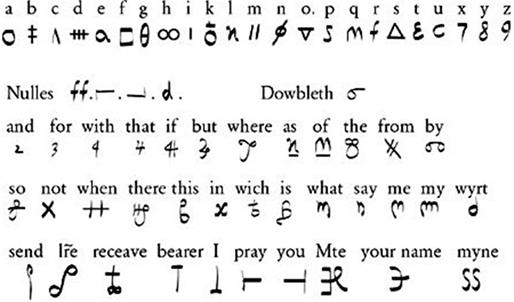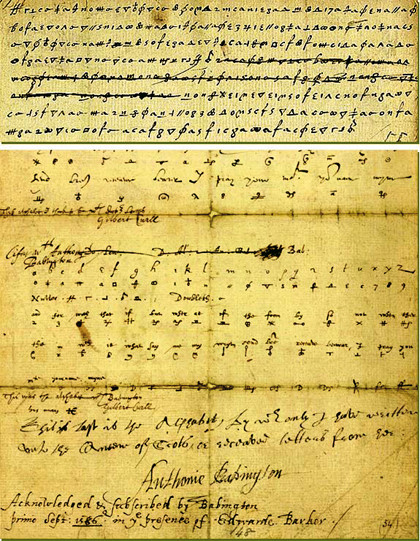

Mary was the Queen of Scotland in the 1500's. When Mary was roughly 25 years old, Mary was imprisoned in a place called Chartley Hall by her cousin Queen Elizabeth I of England due to a conspiracy that Mary had murdered her husband, Henry Stuart, the Earl of Darnley. While in prison, Mary wrote many letters to her people and to her son. However, Mary never received any letters. After 18 years of imprisonment, and no contact with the outside world, Mary became severely depressed. However, on January 6, 1586, she received an astonishing package of letters.
As it turned out, the letters that Mary had written to her people, as well as to her son, were being kept by the French at the French embassy in London. Any letters sent to Mary were also being kept at the embassy. A man by the name of Gilbert Gifford, who was apparently very eager to serve Mary, got a job at the French embassy as a courier. Gifford constructed a plan to get letters in and out of Chartley Hall. He took the messages to a local brewer, who wrapped them in a leather packet, which was then hidden inside a hollow plug used to seal a barrel of beer. The brewer would deliver the barrel to Chartley Hall, whereupon one of Mary's maids would open the plug and take the contents to her mistress. The process worked equally well for getting messages out of Chartley Hall. (Note: This was a type of Steganography!)
Meanwhile, unknown to Mary, a plan to rescue her was emerging in London. At the center of the plot was a man whose name was Anthony Babington. Babington developed an ambitious plan to free Mary Queen of Scots and assassinate Queen Elizabeth.This became known as the "Babington Plot." However, everyone involved in the conspiracy agreed that they could not move on with the plan without a blessing from Mary.
As fate would have it, on July 6, 1586, Gifford arrived on Babington's doorstep. He delivered a letter from Mary, explaining that she had heard about Babington by her supporters in Paris and looked forward to hearing from him. In reply, Babington compiled a detailed letter in which he outlined his scheme. As an extra precaution, Babington enciphered his letter so that even if it was intercepted by Mary's jailer, it would be indecipherable and the plot would not be uncovered. He used a cipher that was not a simple monoalphabetic substitution, but rather a nomenclator (a system of encryption that relies on a cipher alphabet, which is used to encrypt the majority of a message, and a limited list of code words). It consisted of twenty-three symbols that were to be substituted for the letters of the alphabet (excluding j, v and w), along with thirty-five symbols representing words or phrases. In addition, there were four nulls (symbols that mean nothing) and a symbol signifying that the next symbol represents a double letter.

However, the plot thickened. Although Gifford was apparently acting as an agent for Mary, he was actually a double agent. Unbeknown to Mary, Gifford had written a letter to Sir Francis Walsingham, principal secretary to Queen Elizabeth, offering his services. Walsingham recruited Gifford as a spy. Each time Gifford collected a message to or from Mary, he would first take it to Walsingham. Walsingham would then pass it to his counterfeiters, who would break the seal on each letter, make a copy, and reseal the original letter with an identical stamp before handing it back to Gifford.
When Gifford handed Walsingham the letter from Babington to Mary, the first objective was to decipher it. Walsingham employed Thomas Phelippes to decipher the message. Phelippes managed to crack Babington's message using frequency analysis. He established the frequency of each character, and tentatively proposed values for those that appeared most often. Gradually he identified the nulls and disregarded them. Eventually all that remained were the few code words, whose meaning could be guessed from the context.
After Phelippes figured out what Babington's message said, it was clear to Walsingham that Babington was plotting to assassinate Queen Elizabeth. However, he waited to see what Mary would reply to Babington. On July 17, Mary replied to Babington, effectively signing her own death warrant. In Mary's message, she told Babsington to carry on with his plan to free her and assassinate Queen Elizabeth. In 1587, Mary was beheaded all due to Phelippes ability to crack the nomenclator (Singh 1999).
Mary's Letter is shown below: